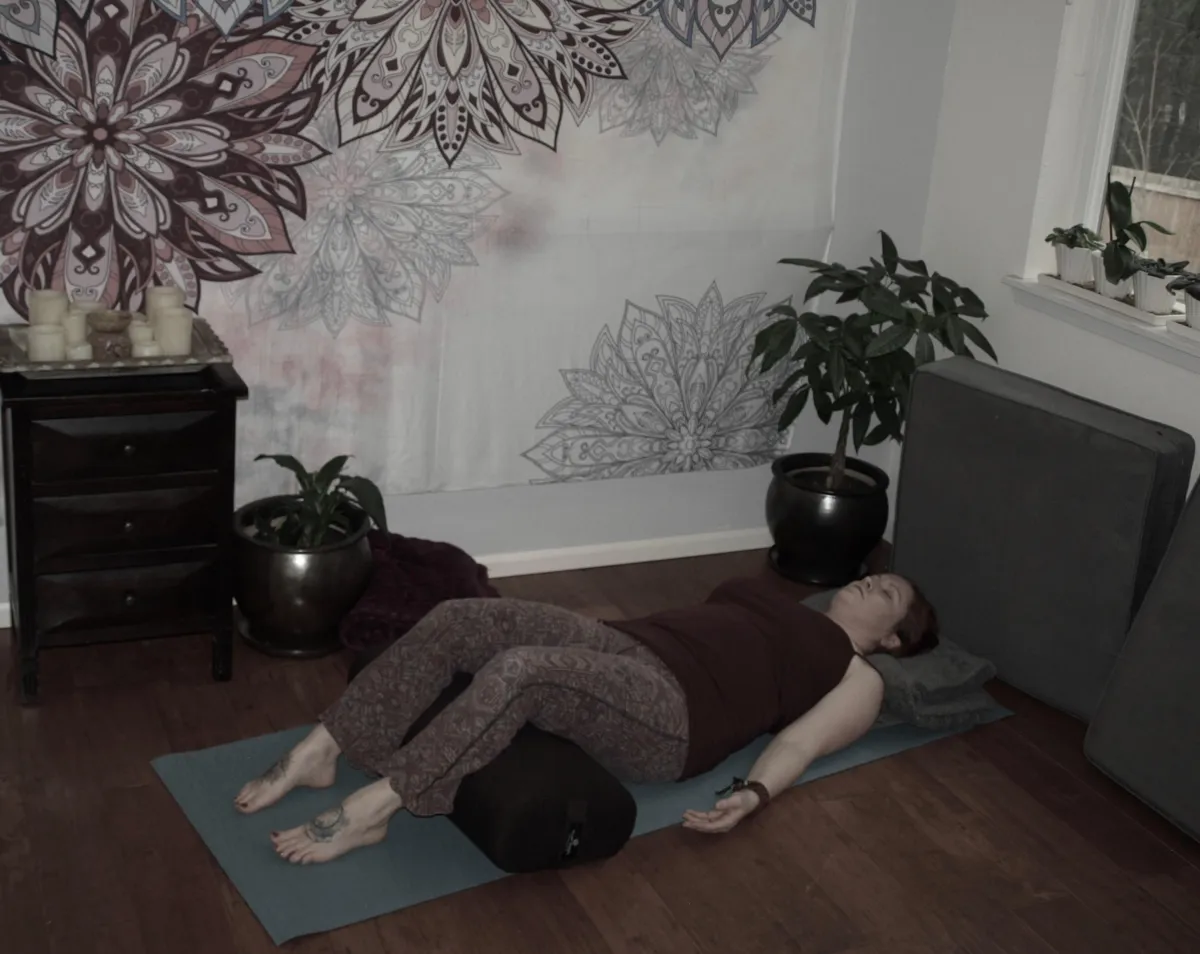Ideas for You
personalizing yoga for yourself

For the Love of Savasana! Are you missing the point of yoga?
“ True yoga is not about the shape of your body, but the shape of your life... Yoga doesn't care about what you have been; Yoga cares about the person you are becoming” - Aadil Palkhivala
Surely you have heard these claims about yoga before: Yoga can increase muscle flexibility, strength and tone. It can improve respiratory health, energy and vitality. Yoga can help balance your metabolism and contribute to weight loss. It can also prevent injury, enhance athletic performance , and improve your cardiovascular health. And, of course, much research has shown yoga helps relieve chronic pain and the effects of chronic stress and anxiety.
But, are you among the thousands who reported they tried yoga for these reasons, yet haven’t seen real, lasting results? Perhaps, it is because when we (the collective western yoga community) advertised these great benefits, we neglected to share the fine print.
The fine print: Yoga requires consistent, and very often, long-term practice to produce these results in a real, tangible way. (Refer to my realization that yoga is hard work.) This is where the concepts of abhyasa (practice, willpower, discipline) and vairagya (surrender, acceptance, letting go) are (sometimes) brought into our yoga classes.
But wait! There’s more!
The finer print: Modern, westernized yoga has historical roots in a thousands-year-old tradition originally designed as spiritual practices to develop discernment, self-awareness, and higher consciousness in an individual. [To be clear: yoga does not subscribe to a particular theological dogma. You can practice any religion, or none at all, and still be a yogi.] Which means that, put back into context, even the practice of abhyasa and vairagya are actually about what is going on for an individual on a mental-spiritual level. The terms abhyasa and vairagya were not originally used in reference to anything at all about asana (the practice of poses) – though this seems to be a little known fact, even among well-trained teachers.
I don’t often see that finer print above brought up in yoga marketing and advertisements, but I do like to keep everyone in the know. So there it is! A little added perspective to tuck in the back of your mind.
So what does get mentioned in those glossy marketing advertisements?
Let’s Acknowledge the Elephant on the Yoga Mat
According to the bikini-clad, fancy arm-balancing, Gumby-like leg flexibility of oh so many images of asana, we can assume yoga is about attaining feats of strength and flexibility that will impress the IG-world over. And according to the ever popular 30-day challenges, we can assume it is about putting your grit to the test to see how much gumption you’ve got. And then, according to the research referenced in many promotions, we can assume (insert skeptical, sarcastic tone here) it is the cure all for whatever ails us.
If ever you’ve seen any yoga images or promotions that left you feeling any of the above, on behalf of my fellow yoga teachers, please accept my sincere apologies for the ways yoga can be so misrepresented.
On the other hand, perhaps you have seen these very images or promotions and assumed…
Yoga is about honoring and celebrating the beauty, strength and grace our bodies can show off. Good for that bikini-rockin chick flipped upside down with her legs curled into a backbend! And yoga is about challenging yourself to keep on keeping on because you are committed/strong/determined/brave enough to take that 30-day challenge by the horns. Just think of the incredible things you will learn from that experience! And then, yes, yoga is about hope for healing – on so many levels, in so many ways.
If ever you have created an ad or promotion like these with intentions like those above, but instead it was ridiculed for misrepresenting yoga, on behalf of my fellow yogis, please accept my sincere apologies for the ways yoga can be so harshly criticized.
It all depends on how you look at it, doesn’t it? When it comes down to it, we never see the world (or the yoga promotion) the way it is. We see it the way we are.
So, How Are You? How Is Your Yoga?
Setting aside whatever first inspired you to try out yoga, I am willing to bet the thing that keeps you going after mastering the impressive pose, finishing the challenge or feeling better is something more, bigger, and deeper. I suspect, or at least I hope, it is that experience of better self-awareness and inner connection that sets yoga apart from other forms of exercise.
If you look at yoga as a way to…
lose weight,
build strength,
increase flexibility,
overcome chronic pain, or
cross-train to prevent injury
… then good on ya! But there is more to take away from the mat, and you may be missing out.
If you look at yoga as a way to…
combat stress,
balance your hormones or blood pressure,
increase your energy, or
gift yourself the blessing of some self-care amidst a busy lifestyle
… then, great, I am glad you found yoga! But there is more to take away from the mat, and you may be missing out.
If you approach yoga to use it like duct tape for your life, then I will hold space for you to do just that with no judgement whatsoever from me, my friend. Because, sure, I use yoga that way, too. But be careful not to become so focussed on the minutia that you overlook the bigger picture. Know that all the touted benefits of yoga are actually more like side effects of the practice rather than the crux of it.
The heart of practicing yoga is about becoming aware of our samskaras (habits) – whether that be physical, physiological, or psychological – and discerning whether or not these samskaras are beneficial (satsamskaras) or harmful (asatsamskaras). This is true for practicing any of the eight limbs.
Notice if your interpersonal habits with others (Yamas) are beneficial or not.
Reflect on whether your intrapersonal habits within yourself (Niyamas) serve you well or not.
Develop self-awareness around whether your movement patterns (Asana) help or hinder your body overall.
Be aware of whether habits that affect your vitality (Pranayama) are helpful or harmful.
Notice if your mental habits help or inhibit your ability to step back from all that is going on around you (Pratyahara) to gain a better perspective.
Reflect on whether or not those mental habits interfere with your ability to focus (Dharana).
Develop the ability to meditate (Dyana) into a habit!
Be aware of anything in your body, mind, or spirit that tends to help or hinder your ability to settle into and really experience joy and peace (Samadhi).
Of course, this also comes with fine print: Approaching yoga at the heart of it this way is a whole lot of Tapas, and it isn’t always pleasant or blissful, but, so far as I have experienced, it is always worth it!
Hold On! If the Heart of Yoga is Habits, Then Why All the Focus on Poses?!
Because, my dear friend, so many of us need to start by healing the body, settling the nervous system, and calming the breath before we can tune into this deeper, inner work. For some of us, we can feel healed, settled, and calm after 60 minutes of asana and easily spend 20-30 minutes in Savasana meditating on our habits. For others of us, we need weeks or months or years of asana-focused yoga before we feel healed, settled, and calm enough for this deeper work.
The beauty of yoga is that time is relative. Whether it takes 9 practices or 9 years makes no never mind. And thank goodness for that, because habits are tricky.
Habits are by nature something that we perform unconsciously. Habits are also relatively emotionless, and feel reflexive, as if hard-wired into us. They are also always performed within a specific context (think Pavlov’s dogs). This isn’t because they are sneaky or the brain is lazy. It is simply a necessary function for the brain to work efficiently. And many, many, many of our daily habits are hugely beneficial to us. The work of yoga though, is to systematically observe, check-in with, and evaluate the value of each habit – keeping what serves us, and replacing whatever does not.
If dissecting the what, how and why of habits intrigues you, then I highly recommend Charles Dihugg’s book The Power of Habit. [Disclaimer: Nope, I do not receive any compensation for purchases made via the link above. I am simply sharing the good karma vibes here.)
How Do I Incorporate This Into My Yoga Practice?
Find an experienced teacher. Read books and blogs by experienced, well known, well respected teachers. Let them be your guru (the one who reflects yourself back to you; shines a little light where your perspective is clouded) until you uncover your own inner guru.
Yes, I do earn a living teaching asana, pranayama, meditation, theory and philosophy. And yes, I realize that once folks tap into their inner guru they won’t pay me to teach them any of it anymore. Admittedly not the most lucrative business plan, if I am not convincing you that you will always need me (or need whomever your teacher currently is). However, I know better enough to expect more from you. When you first step into my office, know that I expect – I am trying even – to get you to the place where you connect with your inner wisdom wholly and eventually pick your inner guru over me.
I am indeed advocating for each individual to find their own way to and through yoga, and to become their own best teacher in the end. The big picture, from a teacher’s perspective, is that over time you will rely less and less on my cueing and prompting until you rely less and less on even attending classes or scheduling private sessions. Instead, somewhere down the road, you become your own best guru and you practice on your own, in your way, however best serves your mind-body-spirit. For that is when you get to experience Yoga (big-Y), the yoking of mind-body-spirit we speak about so poetically. And that, my dear friend, is the real point of this thing we call yoga (little-y).
© 2025 Balanced Mind Body Therapy, LLC. All Rights Reserved. | Privacy Policy | Terms of Service
920 Alder Ave, Suite #201, Sumner, WA 98390, USA
P.O. Box 581, Sumner, WA 98390
(253) 242-9061
margo@mybalancedmindbody.com





